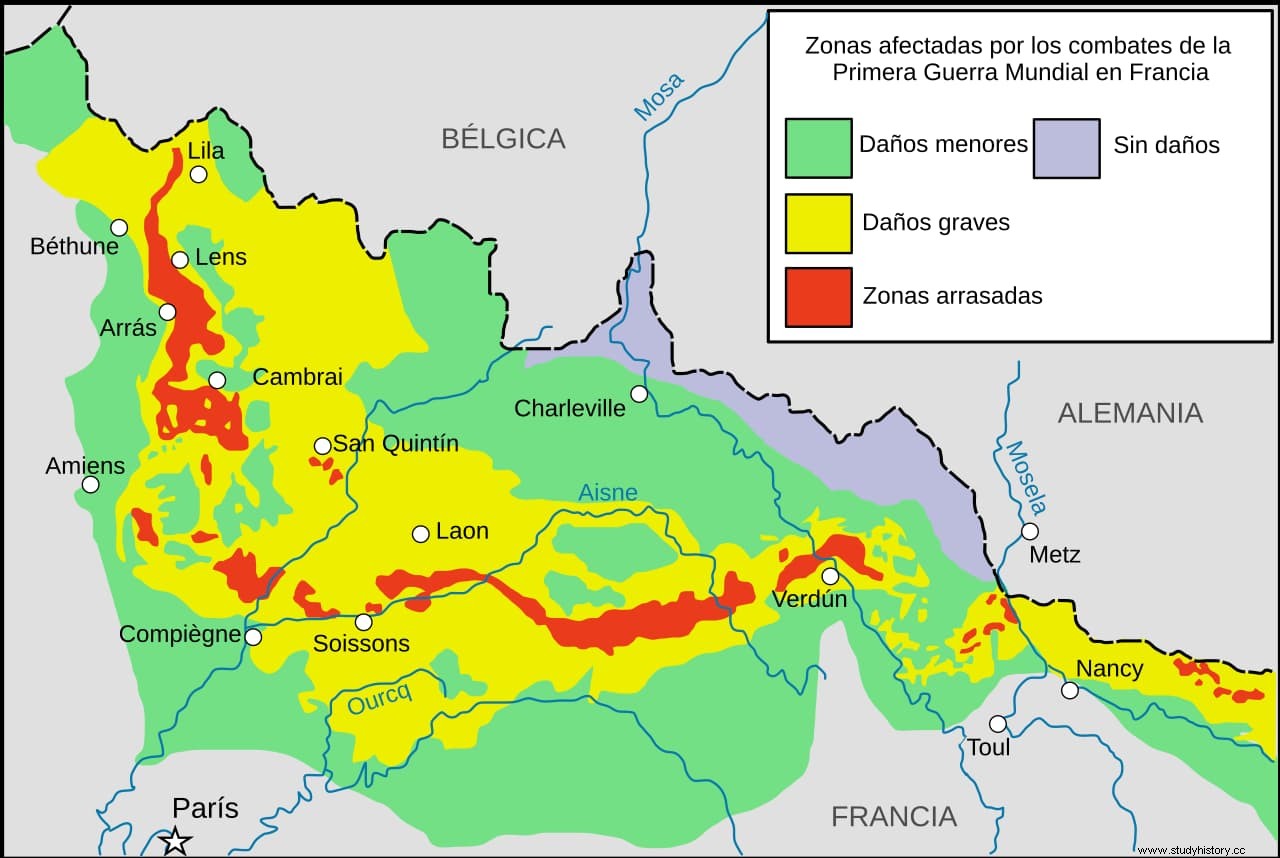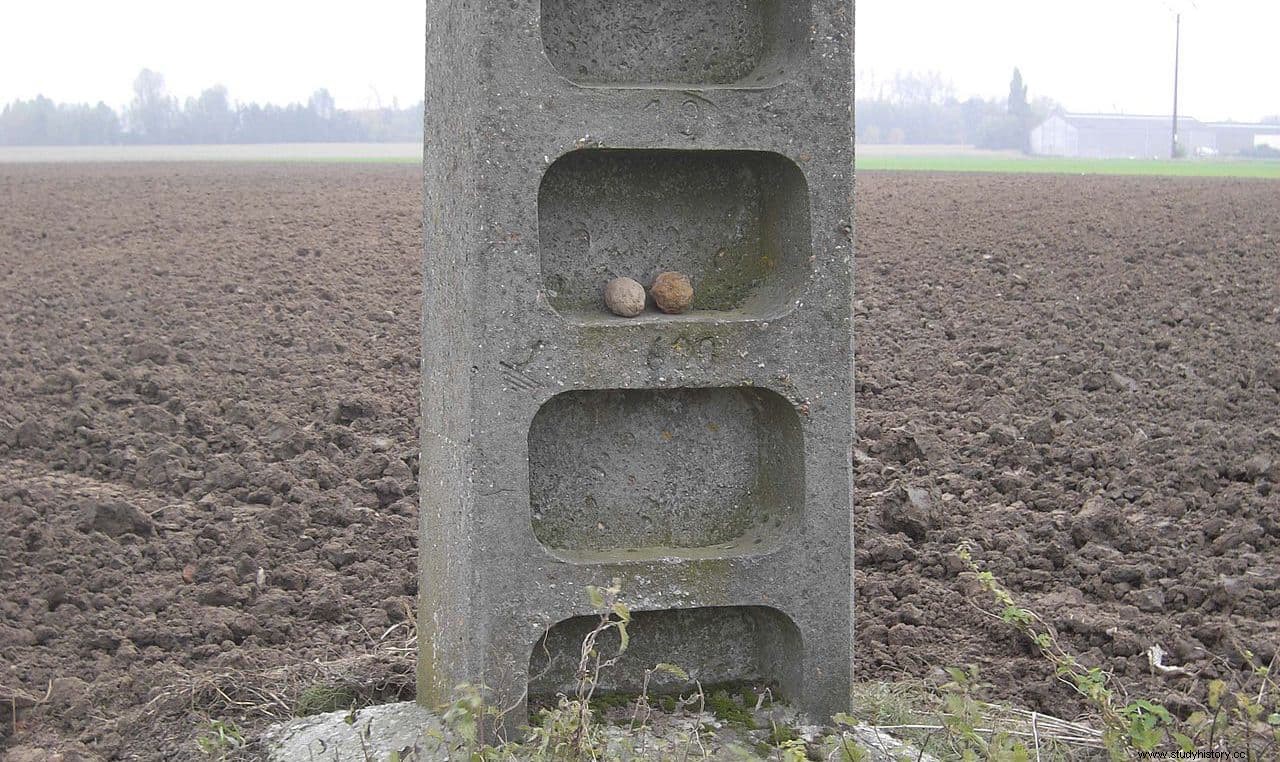From time to time, shells from the Civil War are still found in Spain or defensive constructions whose memory had been buried appear. It is also not uncommon that in other corners of the world they appear from the Second World War, despite the time that has elapsed. But that's nothing compared to the so-called Iron Harvest , name given to the collection that is made each year of buried war equipment (unexploded ammunition, barbed wire, various weapons...) since the First World War, which in certain areas of Europe continues to be extraordinarily abundant and is counted by thousands of tons.
We tend to see the Great War as something that has been far away in time and, certainly, has already surpassed the century of its completion. Unlike the global war that followed twenty-one years later and which some photos and the cinema have incipiently colored, the one developed between 1914 and 1918 remains in our minds in black and white and with an air so vintage that it is not surprising that it is considered the real beginning of the 20th century, beyond the corset of dates. But the chronological distance does not prevent sinister material memories from continuing to emerge with a frequency that amazes to the same extent that it gives us an idea of the destructive dimensions that it once had.
Because the data is chilling:it is estimated that during the conflict, a ton of explosives were fired per square meter on the Western Front, an impressive figure that is even more serious if one takes into account that one in three did not detonate. Or to put it another way, two-thirds of the shells remained intact, buried in what were then mudflats on the front lines or simply hidden from the view of the brigades that dedicated themselves to cleaning up the battlefields at the end of the war. And the problem is that, later, these fields returned to their traditional use:agriculture.

This has caused -and occasionally continues to do so- a more than considerable number of victims, both military (deceased artificers when trying to disarm the artifacts) and civilians, especially peasants who, while working, ran into an unexpected and deadly surprise, but also tourists and even war memorabilia collectors Something that happens in a special way in some regions that during the war became prominent scenes of bloody battles.
In another article we saw an example of this in what is called the Red Zone, a triangle formed by the towns of Lille, Compiègne and Verdun in which the amount of explosives, projectiles and gases not only altered the landscape giving it a characteristic perforated image ( by the craters of the explosions) but also contaminated the subsoil with lead, chlorine, arsenic and acids in such a way that, together with the biological remains (corpses of humans and animals), it was preferred not to clean it after the war. There were powerful reasons, since calculations estimated that it would take seven centuries to complete this work.

Suffice it to say that between 2005 and 2006, up to three hundred projectiles were found for every 10,000 square meters, only 15 centimeters deep. So instead, the place was declared uninhabitable and fenced off. But it is that in 2015, for example, seven farms in the fertile fields of the Meuse region of France were forced by the authorities to destroy their cereal crops after high levels of metal contamination from World War I ammunition were detected. World.
They are not the only sites with such features; there are others, notably in Belgium and Germany. In all of them, the aforementioned Iron Harvest is carried out every year. , generally when spring and autumn arrive because that is when the farmers proceed to till and sow their fields, and when they usually find remnants of the war. It must be borne in mind that the lands of northern France and the Flanders region, where heavy fighting took place, are today covered by vast fields of crops in which bullets and shells are added to the normal collection.
So abundant are these pieces that, for example, as they find them during their working day, Belgian peasants place them lined up on the edges of their plots or in the holes of telegraph poles so that later the army can take them away and detonate them in a center built ad hoc in 1980 in the municipality of Langemark-Poelkapelle. They receive two thousand calls each year and require 72 men to go out each day to collect this material; It so happens that the government has encouraged the shielding of the lower part of the tractors to reduce the payment of compensation. In France, the Département du Déminage is responsible for harvesting this peculiar harvest. , which adds up to an average of 900 tons per year.

One of the hot spots is precisely a city in Langemark-Poelkapell, as they did not choose the site at random. This is Ypres, the largest Flemish city, sadly famous because it was there that, in April 1915, poisonous gas was used for the first time as a weapon:a series of compounds, of which the one made from dichloro stands out, which due to its color was popularly called mustard gas, although it was also called yperite for the place of its premiere. They could be launched in special artillery shells or simply released from the holding cylinders, letting the previously probed wind push the cloud in the direction of the enemy.
We already talked about its terrible effects, both on humans and on the environment, in the article dedicated to the Dead Men's Attack:it acts on contact with the skin, corroding it and turning it greenish, in addition to consuming mucous membranes and tissues. soft moist, due to which the lungs and other internal organs burn from the inside when breathing; Something similar happens with the eyes, which is why blindness was frequent among victims of mustard gas.
About 300 million shells fell on Ypres from both sides during the Great War. Little by little they come back to the surface by removing the land for farming or construction; In 2013 alone, 160 tons were collected and between 200 and 250,000 projectiles of this type are located each year. This dangerous material is stored in the Houthulst forest, near the Dutch border, under surprisingly open tendejones, for lack of better facilities. There are no less than 18,000 projectiles -, about 300,000 kilos - that accumulate on pallets or directly on the ground, despite its alarming state of deterioration.
But we must add that 5% of those used in that contest contained gas and those that did not explode - 30% we said - tend to degrade over time, with the danger of releasing their sinister load on those who try to move them, since whether civilian or military. In fact, there have been cases of people suffering chemical burns as a result, thus adding to the long list of casualties recorded by the iron harvest since 1945:no less than 630 French sappers have died removing ammunition, whom there are to add another 260 (plus 535 wounded) around Ypres.
Let us extrapolate this situation to other wars that are devastating other countries today, with the aggravating circumstance that they often belong to the Third World and the subsequent clean-up plans do not have the funds available in Europe or express concern on the part of their unstable governments. We all remember those reports of mutilated civilians -often children- for stepping on unknown antipersonnel mines. Take a look at the conflicts that have taken place around the world in the last half century, let's say, and you won't know where to put your feet.
